According to the Gospel of Matthew, a star appeared in the night sky that guided the Magi to Jesus. Was it an actual star? If so, how did it move? Was it a visible manifestation of God’s glory or an angel? If so, why does Matthew called it a star?

Was there a cosmic event at the time, like an unusual alignment of heavenly bodies? Is the appearance of a star rooted in Greek and Roman mythology? Is it rooted in the Old Testament?
For hundreds of years, commentary authors have wrestled with questions like these when reflecting on Jesus’ birth story in Matthew 2.
Was the star natural or supernatural?
Below you will find commentary authors, past and present, reflecting on the nature of the star.
Some are sure of their position, while others offer a best guess. Some write pages on the phenomenon (though only snippets are quoted below), while others write a single sentence.
How will you weigh the evidence? What will you think about the nature of the star?
Verses in Mathew that Mention the Star
Matthew 2:2 “Where is he who has been born king of the Jews? For we saw his star when it rose and have come to worship him.” (ESV)
Matthew 2:9-10: “After listening to the king, they went on their way. And behold, the star that they had seen when it rose went before them until it came to rest over the place where the child was. When they saw the star, they rejoiced exceedingly with great joy.” (ESV)
The View from 30 Different Commentaries
The commentaries below are not listed in any particular order. If you would like to know about these volumes, please see best Matthew commentaries and best Luke commentaries.
Interested in bible commentaries? Please see Best Commentary Series: The Top 50 to learn more.
# 1
David L. Turner
Matthew
BECNT
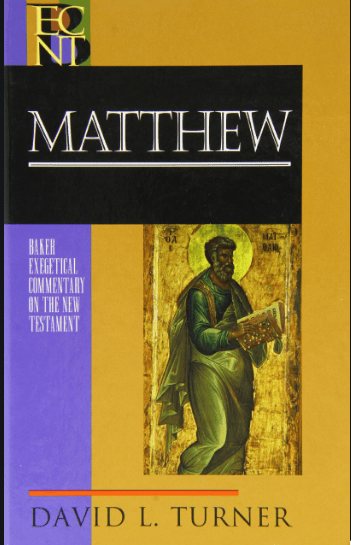
Get this book on Amazon using its exact ISBN.
2:2: “Modern readers wonder whether the rising of the star may be explained scientifically as a comet, a planetary conjunction, or a supernova providentially arranged by God. Whether or not modern explanations have merit or not, Matthew would evidently view the occurrence as a miracle.” (p. 80)
2:9-10: “As they go, the star they originally saw unexpectedly reappears and miraculously leads them to the vicinity of Jesus, perhaps to his exact location This astral guarantee of God’s guidance exhilarates the magi. Whatever the merit of positing a providential basis for what the magi saw earlier (2:1), no comet, supernova, or planetary conjunction would exhibit the phenomena observed here by the magi.” (p. 85)
# 2
R.T. France
The Gospel of Matthew
NICNT
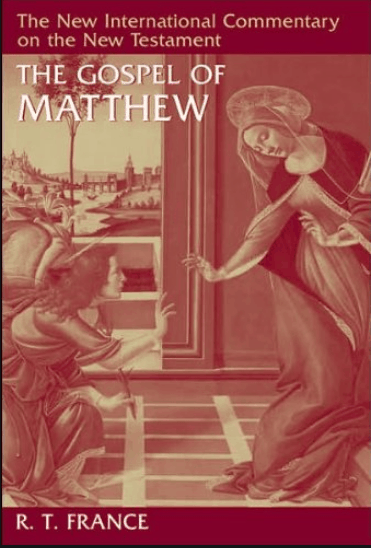
Get this book on Amazon using its exact ISBN.
2:2: “Despite the fascination with astronomical explanations, it may in the end be more appropriate to interpret Matt. 2:9 as describing not a regular astronomical occurrence but the miraculous provision of what appeared to be a star which uniquely moved and then stopped (or at least which appeared to observers on the ground to do so), though of course there is no improbability in a natural astronomical phenomenon being the basis on which the magi made their initial deductions and set off on their journey.” (p. 69)
2:9-10: “[The Magi] already knew from Herod that Bethlehem (a mere five or six miles from Jerusalem) was their destination, so that they did not need the star to tell them that; their extravagantly expressed joy is hard to explain unless the star somehow indicated the actual house rather than just the village as a whole. It seems, then, that the star’s movement gave them the final supernatural direction they needed to the specific house ‘where the child was.'” (p. 74)
# 3
Robert Mounce
Matthew
UBCS
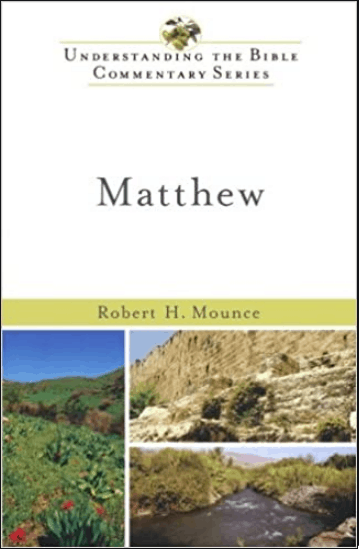
Get this book on Amazon using its exact ISBN.
2:2: “The journey from the East was prompted by a remarkable phenomenon that they had seen in the heavens. It may have been the conjunction of Jupiter and Venus in the spring of 7 B.C. We know that ancient astronomers were able to calculate the orbits of planets years in advance.” (p. 13)
2:9-10: “The star is said to go ahead of them until it stopped over the place where the child was (v. 9). This has been taken either as a miraculous movement of the star leading them to the very house where the baby Jesus was (no problem for ancients; a star is said to have led Aeneas to the spot where Rome was founded; Virgil, Aeneid 2.69ff.) or as no more than a way of saying that what they had seen in the heavens ‘led’ them to find the newborn Messiah (cf. Plummer, p. 12).” (p.15)
# 4
Donald A. Hagner
Matthew 1-13
WBC
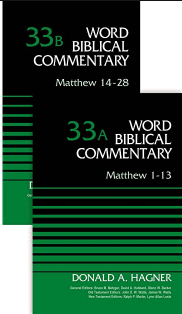
Get this book on Amazon using its exact ISBN.
2:2: “Although we cannot be certain, it may well be that in ton astera, ‘the star,’ we are to understand a ‘natural’ astronomical phenomena such as a conjunction of planets (Jupiter and Saturn, for example, came in line in 7-6 B.C. in the constellation Pisces… a comet (Halley’s passed in 12-11 B.C.), or a supernova (i.e. an exploding star). In this phenomena, whatever it was, the magi-astrologers perceived the sign of the fulfillment of the Jewish eschatological expectation concerning the coming king and so would have set off on their journey toward Jerusalem.” p. 27
2:9-10: “This verse makes difficult the explanation of the star as a strictly ‘natural’ astronomical phenomenon. If the ‘natural’ explanation of the star is accepted nevertheless, the the present tense… must be understood either as a touch of romantic myth growing out of the historical kernel or else as referring to something actually experienced by the magi and interpreted in terms of the leitmotif of the star that first ‘led’ them from the east to Jerusalem. The real point is that by divine guidance they are able to complete their quest and find the child.” p. 30
# 5
Davies and Allison
Matthew 1-7
ICC
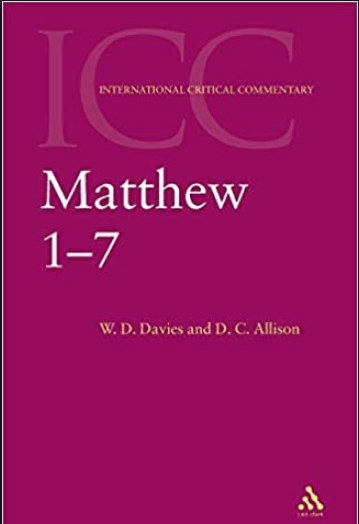
Get this book on Amazon using its exact ISBN.
2:2: “The story of the star and of the magi from the east seeking a king would not have been foreign to the ancients… the association of astronomical phenomena with the appearance of a new king was common.” (p. 23-24)
2:9-10: “This raises difficult questions. Why would one need supernatural guidance to make the six-mile trek from the capital to Bethlehem? And how could a heavenly light be said to go ahead of people, or stand over a precise place, seemingly a particular house? It seems likely enough that Matthew, like so many commentators before Renaissance astronomy, understood the star to be animate and so an angel.
Certainly modern attempts to identify it with a planetary conjunction, comet, or supernova are futile. The Protoebangelium of James (21.3), Ephrem the Syrian, and Chrysostom all rightly recognize that the so-called star does not stay on high but moves as a guide and indeed comes to rest very near the infant Jesus.” (p. 26)
# 6
John Nolland
The Gospel of Matthew
NICNT
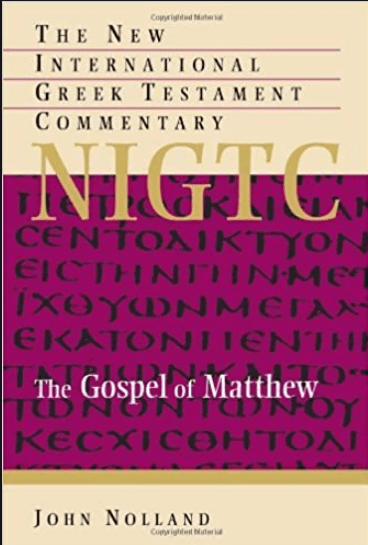
Get this book on Amazon using its exact ISBN.
2:2: “The identity of the ‘star’ has been extensively debated. The main options which have been canvassed may be divided between those which look for a natural astronomical explanation (the conjunctions of planets, a comet, or a supernova) and those which look to a miraculous event (a new star in the heavens, a wandering ‘star.'” p. 110
2:9-10: “In the present form of the story, the Magi clearly do not need the star to direct them to Bethlehem, so its necessary role is reduced to identifying the place of residence of the child. Nonetheless, the star appears to take up its guiding role already at the point of departure from Jerusalem. In an originally separate Magi story it is likely that the star is needed already to identify Bethlehem as the goal of the journey because the Magi fail to get direction from Jerusalem.
The exceeding joy of the Magi at the reappearance of the star is better motivated in relation to a quest which has otherwise dead-ended in Jerusalem than (as in the present form) in relation to the relatively straightfoward task of finding the right home in the small village of Bethlehem.” (p. 116, footnote)
# 7
Matthew
Daniel M. Doriani
REC
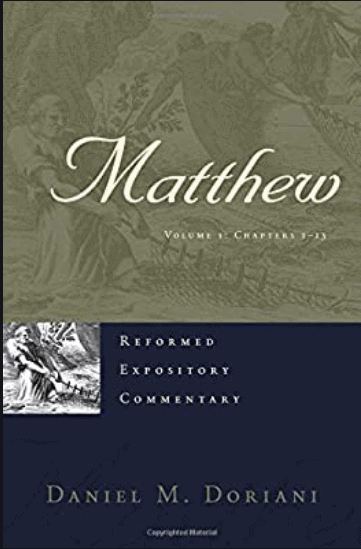
Get this book on Amazon using its exact ISBN.
2:2, 9-10: “One theory surmises that the star was an exploding supernova that slowly traversed the sky. If so, that tells us something both about the Magi and about God. The Magi studied the heavens in a day when the boundary between astronomy and astrology vague. The Bible forbids astrology… yet God reverses field and chooses to speak to stargazers through a star.” (p. 28)
# 8
Stanley Hauerwas
Matthew
Brazos
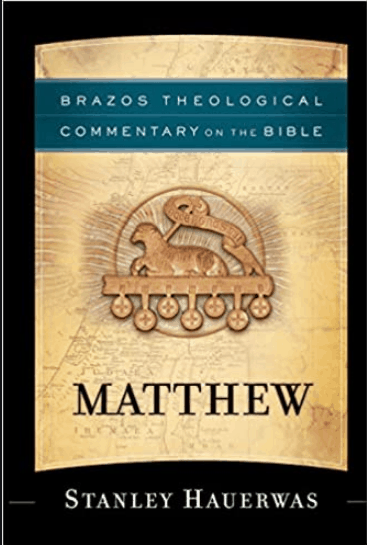
Get this book on Amazon using its exact ISBN.
2:2, 9-10: “The cosmic signs heralding this birth should not be surprising, given that the love born in this humble place is the love that moves the sun and the stars… the star stops over the place where Jesus is born, paying homage to the child and eliciting from the wise men overwhelming joy.” (p. 40-41)
# 9
Rydelnik and Vanlaningham (eds)
Moody Bible Commentary
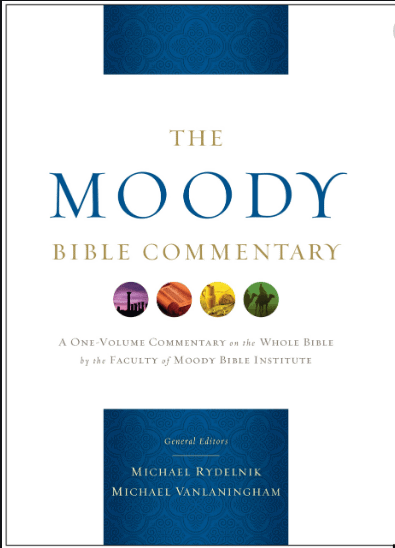
Get this book on Amazon using its exact ISBN.
2:2, 9-10: “What was this star? Jupiter and Saturn were aligned in Pisces in 7 BC, but such planetary alignments were never called ‘stars.’ Halley’s Comet was visible in 12 BC but this is certainly too early. That this star appeared (2:7) suggests it had not been documented previously, and 2:9 implies that this star moved around, supporting a supernatural origin, and may parallel the pillar of fire that led the Hebrews in the wilderness.” p. 1457
# 10
D.A. Carson
Matthew
EBC-Revised
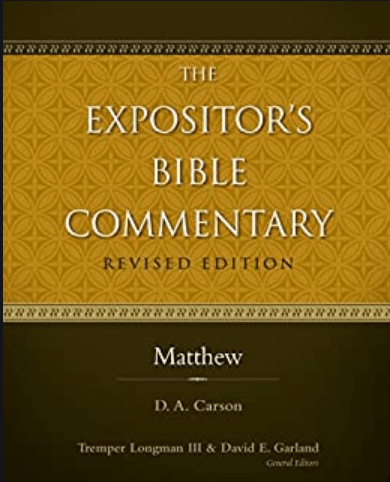
Get this book on Amazon using its exact ISBN.
2:2: “The Magi saw a star ‘when it rose.’ What they saw remains uncertain… Matthew uses language almost certainly alluding to Numbers 24:17, ‘A star will come out of Jacob; a scepter will rise out of Israel’… both Matthew and Numbers deal with the king of Israel (cf. Num. 24:7), though Matthew does not resort to the uncontrolled allegorizing on ‘star’ frequently found in the early postapostolic Christian writings… Matthew neither condemns nor sanctions [astrology]; instead, he contrasts the eagerness of the Magi to worship Jesus, despite their limited knowledge, with the apathy of the Jewish leaders and the hostility of Herod’s court – all of whom had the Scriptures to inform them.” (p. 85-86)
2:9-10: “The Greek text does not imply that the star pointed out the house where Jesus was; it may simply have hovered over Bethlehem as the Magi approached it. They would then have found the exact house through discrete inquiry since (Luke 2:17-18) the shepherds who came to worship the newborn Jesus did not keep silent about what they saw.” (p. 88)
# 11
Grant Osborne
Matthew
ZENCT
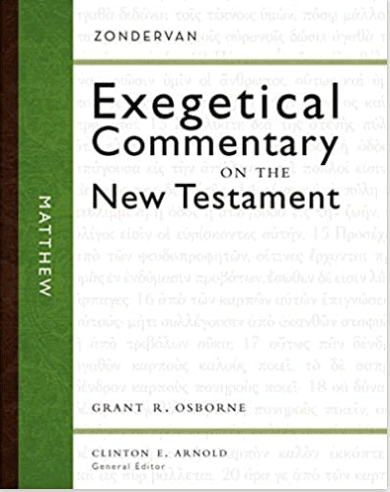
Get this book on Amazon using its exact ISBN.
2:2: “The ‘star’ has been variously explained with reference to natural phenomena, but the most likely is a supernatural event, possibly similar to the pillar of fire in Exodus (that moved before the Israelites). Actually both may be true; since the Magi were astrologers, they may well have been originally brought to Jerusalem by astrological phenomena and then were guided supernaturally to Bethlehem and the house.” (p. 87)
2:9-10: “It must have been a supernatural manifestation, for it not only ‘went before’ them but also stopped and ‘stood’ above the home in which Jesus was staying.” (p. 90)
# 12
Craig S. Keener
Matthew
IVPNTC
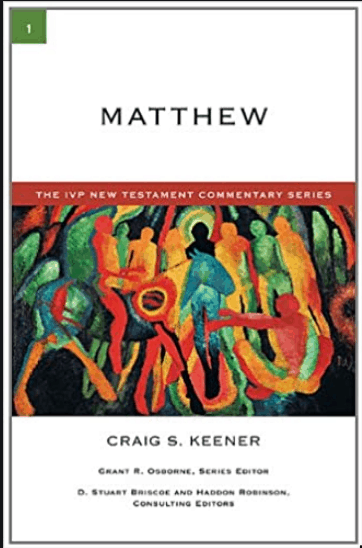
Get this book on Amazon using its exact ISBN.
2:2: “Magi were Persian astrologers, and that they would respond to celestial phenomena in the manner in which the text depicts is not implausible… yet even supernatural guidance like that of the star can take the astrologers only so far; for more specific direction, they must ask the leaders in Jerusalem where the king was to be born (2:2).”
2:9-10: “Possibly the moving star in Matthew alludes to the pillar of cloud guiding Israel in the wilderness, suggesting that however the astrologers viewed the star, God used it in a manner reminiscent of Israel’s salvation history.”
# 13
Wenham, Motyer, Carson, France (eds)
NBC
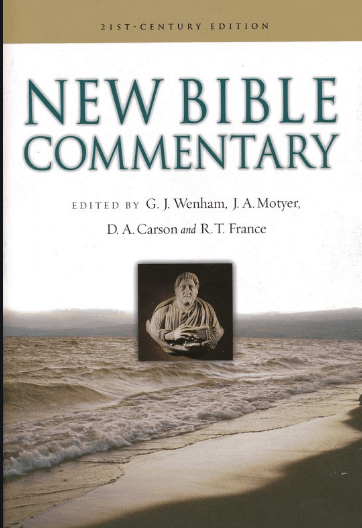
Get this book on Amazon using its exact ISBN.
“[The magi’s] insights were derived from sophisticated astronomical observation combined with the sort of ‘interpretation’ which present-day horoscopes provide.
By such calculations made in the east (probably Mesopotamia, mod. Iraq) they had concluded that an important royal birth had taken place in Palestine, which called for a ‘state visit.’
Matthew clearly sees this as an acceptable Gentile response to genuine revelation, despite dubious means… the star probably echoes Balaam’s prophecy of a star… out of Jacob’ (Nu. 24:7).” (p. 908-909)
# 14
R.C. Sproul
Matthew
SAEC

Get this book on Amazon using its exact ISBN.
2:2, 9-10: “Perhaps no text has been subjected to more speculation than the description of the star that led these men from the East… I think it would be very difficult to follow the tail of a comet, or even an inordinately bright conjunction of two planets, to Jerusalem and then from Jerusalem to Bethlehem. I suspect that this is another account of a miraculous work of God to guide me to their proper place.” p. 29
# 15
Michael Green
The Message of Matthew
BST

Get this book on Amazon using its exact ISBN.
“But the most probable suggestion is that it was not one new star so much as the conjunction of Jupiter and Saturn in the area of the sky known as Pisces… so this conjunction of planets, giving the impression of one very bright star, would have meant to the competent astronomer that a new age was beginning, in which the sovereignty of the world would shift to Judea. Jerusalem was the capital city of Judea, and it is natural that the Magi should have gone there first.” p. 69
# 16
Knox Chamblin
Matthew 1-13
Mentor
Get this book on Amazon using its exact ISBN.
2:2, 9-10: “Yet Matthew, speaking as he does of only one heavenly body, offers no hint of a planetary conjunction… I conclude that the ‘star’ is a miraculous and mysterious phenomenon whose precise identity cannot be ascertained. Yet, its purpose is clear: God provides it to herald the birth of his Son, and to bring into his presence those persons intent upon honoring him.” (p. 218-219)
# 17
John MacArthur
Matthew 1-7
MNTC
Get this book on Amazon using its exact ISBN.
2:2, 9-10: “That the star was not a physical heavenly body is again evident from the fact that it was able to stand directly over the house where Jesus and His family now lived – which for obvious reasons could not be possible for an actual star.” (p. 35)
# 18
Ulrich Luz
Matthew 1-7
Hermeneia
2:2: “The star is the prime reason that associations with astrology cannot be completely excluded; but Matthew represses it indirectly by not indicating how the Magi recognized the significance of the star. God’s guidance alone is decisive…
Matthew is thinking of the widespread idea that each person has his or her star, the important and rich people a bright one, the others an insignificant one which appears at birth and is extinguished at death. The popular astrology of that time is based on this idea. Matthew, however, thinks of the star as a miraculous star.” (p. 135)
2:9-10: “The Magi travel by night, not because this was generally customary in the Orient, but because this gives the narrator the opportunity to speak anew of the star.” (p. 137)
# 19
Frederick Dale Bruner
Matthew 1-12
“The Magi story can also teach us a little doctrine of revelation… The star brings us to Jerusalem; only Scripture brings us to Bethlehem. Creation bring us to the church; the church’s Bible brings us to Christ… I am inclined to think that Matthew is depicting a miraculous star, a ‘Wunderstern,’ that took on a natural star’s form.” (p. 59)
# 20
Craig Blomberg
Matthew
NAC
2:2: “A new star in the sky was often believed to herald the birth of a significant person in the land over which the star shone. So the Magi’s question is a natural inference from their observation… the NIV margin ‘when it rose’ is perhaps a more likely translation and would explain how the Magi’s attention was called to this new celestial feature.” p. 62-63
2:9-10: “Meanwhile, the star guides them to Bethlehem. This is the first time the star is actually said to move. The text leaves open the question of whether or not it had so moved previously. If it had not, this could explain why the Magi had managed to get only as far as Jerusalem… its motion here seems to require a supernatural event. Various attempts to link the star with different astronomical phenomena, especially for purpose of dating (e.g. a comet, or a conjunction of planets), prove interesting but are probably irrelevant.” p. 65
# 21
Charles Talbert
Matthew
Paideia
“Matthew’s story of the star that alerted and guided the wise men from the east would also be an appropriate part of an encomium on Jesus’ birth. The First Evangelist follows the conventional rules for an encomium in Mediterranean antiquity, and in so doing he uses the items honored as part of the Jewish context within which the Gospel was written.” (p. 39)
# 22
James Montgomery Boice
The Gospel of Matthew
“More than likely, however, the ‘star’ was a miraculous phenomenon, possibly an appearance of the Shekinah glory that had accompanied the people of Israel in their desert wanderings, signifying God’s presence with them.
Only something like the Shekinah could have led the wise men over the desert to Jerusalem, reappeared after their meeting with King Herod, guided them to Bethlehem, and then ‘stopped’ over the place where the child was.” (p. 30)
# 23
Michael Wilkins
Matthew
NIVAC
“Another plausible suggestion is that the supernatural phenomenon was actually an angel sent to the Magi to announce the birth of Messiah and to guide them to Jesus… good angels are referred to as stars (e.g. Job 38:7; Dan. 8:10, Rev. 1:16…)… [this view] is consistent with the prominent place of the angel of the Lord in the overall infancy narrative.” (p. 96)
# 24
Matthew
Cambridge Bible for Schools and Colleges
The simplest explanation of this is that a Star or Meteor appeared in the sky to guide the Magi on their way first to Jerusalem, then to Bethlehem. It is, however, quite possible that the Magi were divinely led to connect some calculated phenomenon with the birth of the “King of the Jews.”
# 25
Matthew
Barnes Notes on the Bible
2:2: What this star was is not known. There have been many conjectures respecting it, but nothing is revealed concerning it. We are not to suppose that it was what we commonly mean by a star.
The stars are vast bodies fixed in the heavens, and it is absurd to suppose that one of them was sent to guide the wise men. It is most probable that it was a luminous appearance, or meteor, such as we now see sometimes shoot from the sky, which the wise men saw, and which directed them to Jerusalem.
2:9-10: “From this it appears that the star was a luminous meteor, perhaps at no great distance from the ground. It is not unlikely that they lost sight of it after they had commenced their journey from the East.
It is probable that it appeared to them first in the direction of Jerusalem. They concluded that the expected King had been born, and immediately commenced their journey to Jerusalem.
When they arrived there, it was important that they should be directed to the very place where he was, and the star again appeared. It was for this reason that they rejoiced. They felt assured that they were under a heavenly guidance, and would be conducted to the new-born King of the Jews.”
# 26
Matthew
Jamieson-Fausset-Brown
2:2: “Much has been written on the subject of this star; but from all that is here said it is perhaps safest to regard it as simply a luminous meteor, which appeared under special laws and for a special purpose.”
2:9-10: “and, lo, the star, which they saw in the east—implying apparently that it had disappeared in the interval… went before them, and stood over where the young child was— Surely this could hardly be but by a luminous meteor, and not very high.”
# 27
Matthew
John Wesley
2:2: “We have seen his star” – Undoubtedly they had before heard Balaam’s prophecy. And probably when they saw this unusual star, it was revealed to them that this prophecy was fulfilled. In the east – That is, while we were in the east. “Saying, Where is he that is born King of the Jews? for we have seen his star in the east, and are come to worship him” – To do him homage – To pay him that honor, by bowing to the earth before him, which the eastern nations used to pay to their monarchs.
2:10: “Seeing the star” – Standing over where the child was.
# 28
Matthew
John Calvin
Were the magi led by their acquaintance with astrology to conclude that it pointed out the birth of Christ? On these points, there is no necessity for angry disputation: but it may be inferred from the words of Matthew, that it was not a natural, but an extraordinary star.
It was not agreeable to the order of nature, that it should disappear for a certain period, and afterwards should suddenly become bright; nor that it should pursue a straight course towards Bethlehem, and at length remain stationary above the house where Christ was.
Not one of these things belongs to natural stars. It is more probable that it resembled a comet, and was seen, not in the heaven, but in the air. Yet there is no impropriety in Matthew, who uses popular language, calling it incorrectly a star.
This almost decides likewise the second question: for since astrology is undoubtedly confined within the limits of nature, its guidance alone could not have conducted the Magi to Christ; so that they must have been aided by a secret revelation of the Spirit.
I do not go so far as to say, that they derived no assistance whatever from the art: but I affirm, that this would have been of no practical advantage, if they had not been aided by a new and extraordinary revelation.
# 29
Geneva Study Bible
2:9-10: “When they had heard the king, they departed; and, lo, the star, which they saw in the east, went before them, till it came and stood over where the young child was.”
# 30
Pulpit Commentary
2:9-10: “And lo, the star, which they saw in the East. They would, in accordance with Eastern custom, probably travel by night. Observe that the joy they felt at seeing the star (ver. 10) implies that it had not continued visible (ver. 7, note).
They had fully used all means; now they receive fresh Divine guidance. In the East (ver. 2, note). Went before them. Continuously ( τροῆγεν); “taking them by the hand and drawing them on” (Chrysostom). Not to show them the way to Bethlehem, for the road was easy, but to assure them of guidance to the Babe, over whose temporary home it stayed.
The road to Bethlehem is, and from the nature of the valley must always have been, so nearly straight (until the last half-mile, when there is a sudden turn up the hill) that the star need have moved but slightly. Bethlehem itself is seen soon after passing Mar Elias, a monastery rather more than half-way from Jerusalem (Socin’s ‘Baedeker,’ p. 242).
Till it came and stood over where the young Child was. Does the true reading ( ἐστάθη) suggest the unseen hand by which this star was itself guided and stationed (Matthew 27:11)? or is it used with a kind of reflexive force, indicating that it was by no chance that it stood still there – “took its stand” (cf. σταθείς, Luke 18:11, 40; Luke 19:8; Acts 2:14, et al.; cf. also Revelation 8:3; 12:18)?”
Also see:
Best New Testament Commentaries (index)
Best Old Testament Commentaries (index)
Commentary Authors Interviews (index)
Recent Posts
David Jeremiah, a renowned pastor, author, and speaker, has captivated the hearts of many with his compelling sermons. His messages resonate deeply with diverse audiences, leaving an enduring...
Tim Keller, a distinguished pastor, theologian, and author, has garnered a devoted following through the profound impact of his sermons. In this article, we will explore seven compelling reasons...
